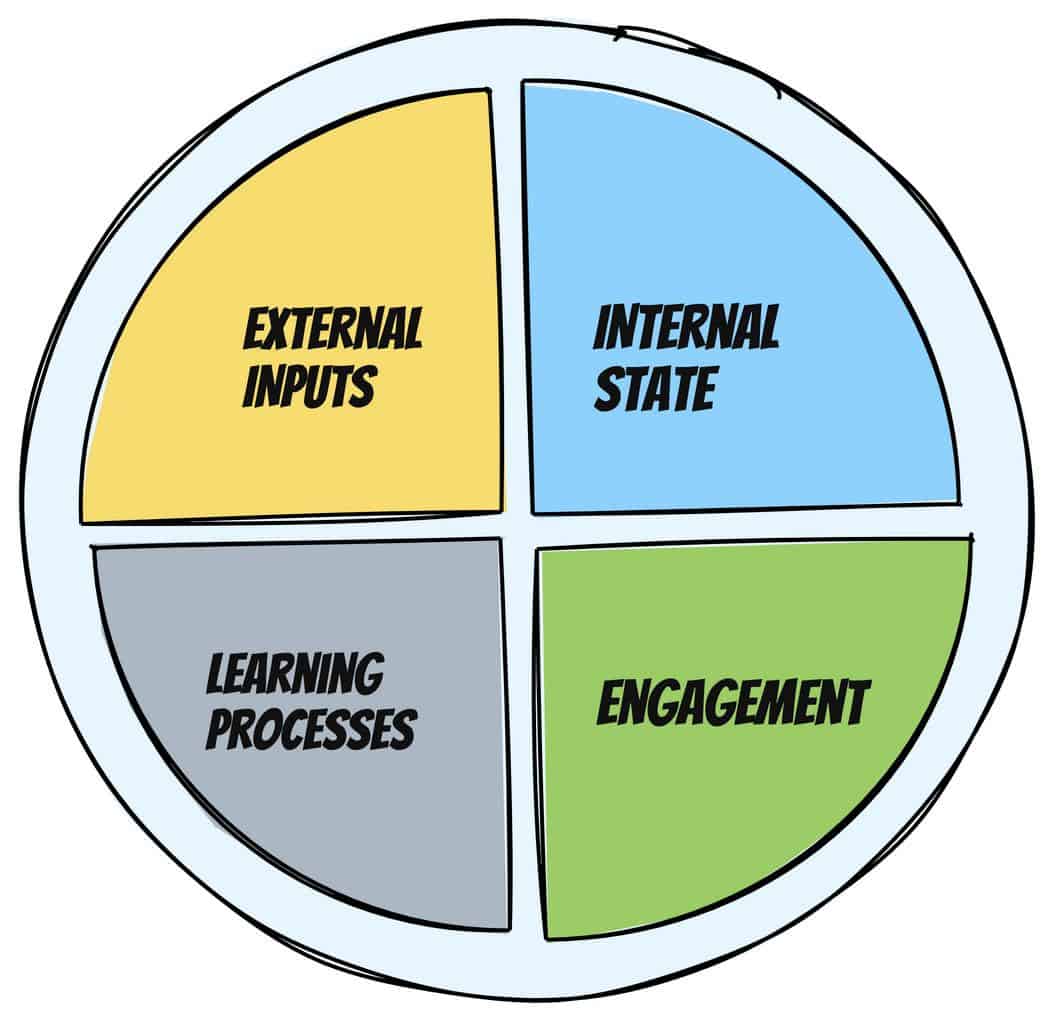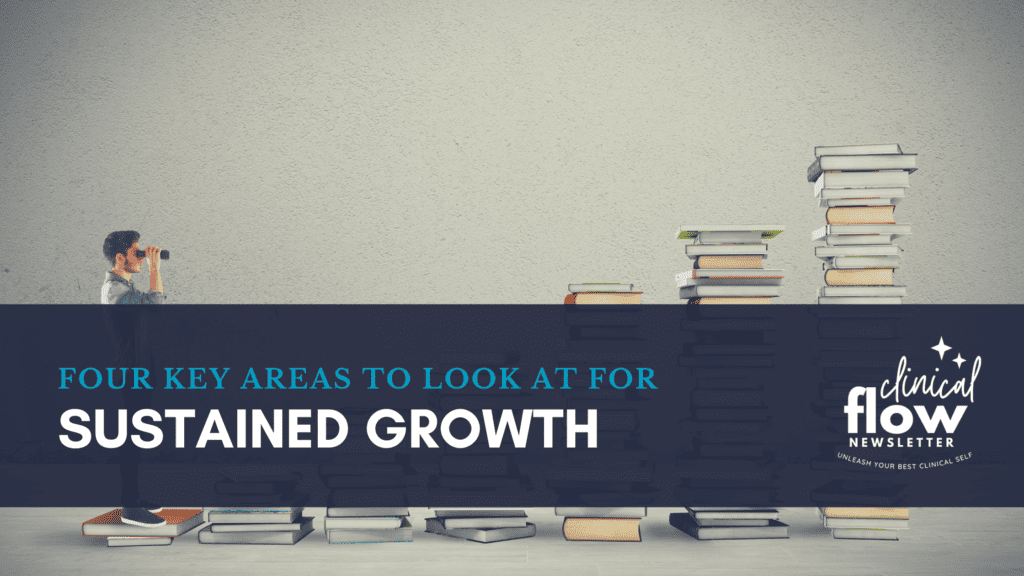In post-grad education, the course is king.
They’re the mainstay of professional development efforts for good reason. But I’ve noticed in my own growth and development that relying purely on courses for professional growth is only part of the answer.
With many of the courses offered in our profession, the focus is on skill acquisition.
Often times they are fire hoses of information.
We take a course and find ourselves energized. All this new information that we’re excited to put into practice.
And then clinical reality hits us.
The amazing technique or exercise we had learned doesn’t go as planned with a patient. And then it happens again. And again.
We’re not sure what happened. Our enthusiasm dwindles. With the busyness of work and life, we have little time to process our learning and integrate it into practice.
After a few weeks, we maybe have one takeaway from the course we are still using. And over the next number of months, we begin to find ourselves more depleted and de-energized and believe that taking another course is the answer.
Professional growth needs more than courses.
Something that I’ve been contemplating is how courses can act as a way to bolster our own sense of inadequacy. Courses can offer a significant dopamine hit and help us to feel less inadequate until the sheen wears off and we’re left with ourselves again.
Jon Kabat Zinn made a profound statement a number of years ago relating to meditation:
Wherever you go, there you are.
When we don’t address the other areas necessary for sustainable professional growth, we keep ourselves vulnerable to the siren song of gurus and courses that offer to take away our anxiety and insecurities.
When we’re in a healthy place and have a functioning personal growth system, courses can accelerate learning and development. Personal processes that support progress and integration ensure that newly budding information and connections aren’t relegated to the shelf of past courses.
Four key areas for sustained professional growth
I believe there are four key areas necessary to monitor and develop within our own personal growth system and activities.
These four areas are not mutually exclusive, but interact with each other to advance clinical flow and ongoing professional growth.
In a nutshell, we need to be aware of signals (external inputs) that are around us for learning. Our ability to self-monitor (internal state) is necessary to engage with these signals. From there, we need learning processes to help us to learn. And finally, our ability to both give and receive support (engagement) is vital for avoiding isolation and staying connected to the broader professional community.

The first area looks at how receptive we are to external inputs. This could include inputs from clients, employers, colleagues and regulatory standards.
The second area looks at our internal state – our ability to perceive, process and act on the triggers/prompts of learning. This includes looking at our decision-making biases, our emotional health and our level of emotional exhaustion.
The third area looks at our learning processes. So much of the focus is on information acquisition that we often can miss putting effort into navigating our learning efforts, including informal and formal learning experiences.
The final area is our engagement with those around us. One of the greatest risks for professional dyscompetence is isolation in our work.
All four areas interact to help us maximize our ability to capitalize on learning opportunities that we encounter and pursue.
That’s A Wrap
I hope you found this a valuable read and that it helped you to explore areas outside of coursework as necessary for professional growth. I was talking to a colleague earlier this week that I believe hits the message home: “It’s not about more information, it’s about transformation.”

